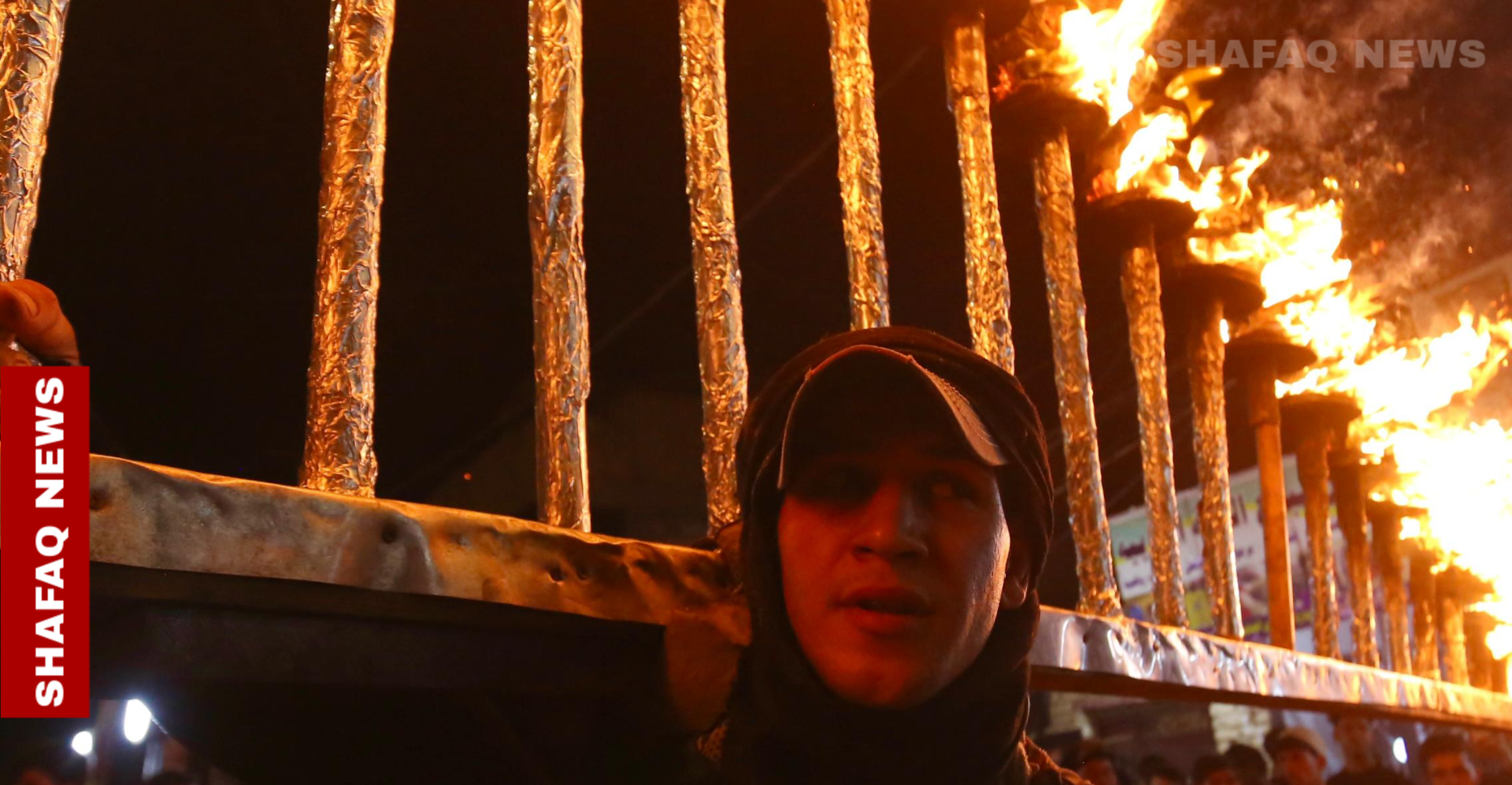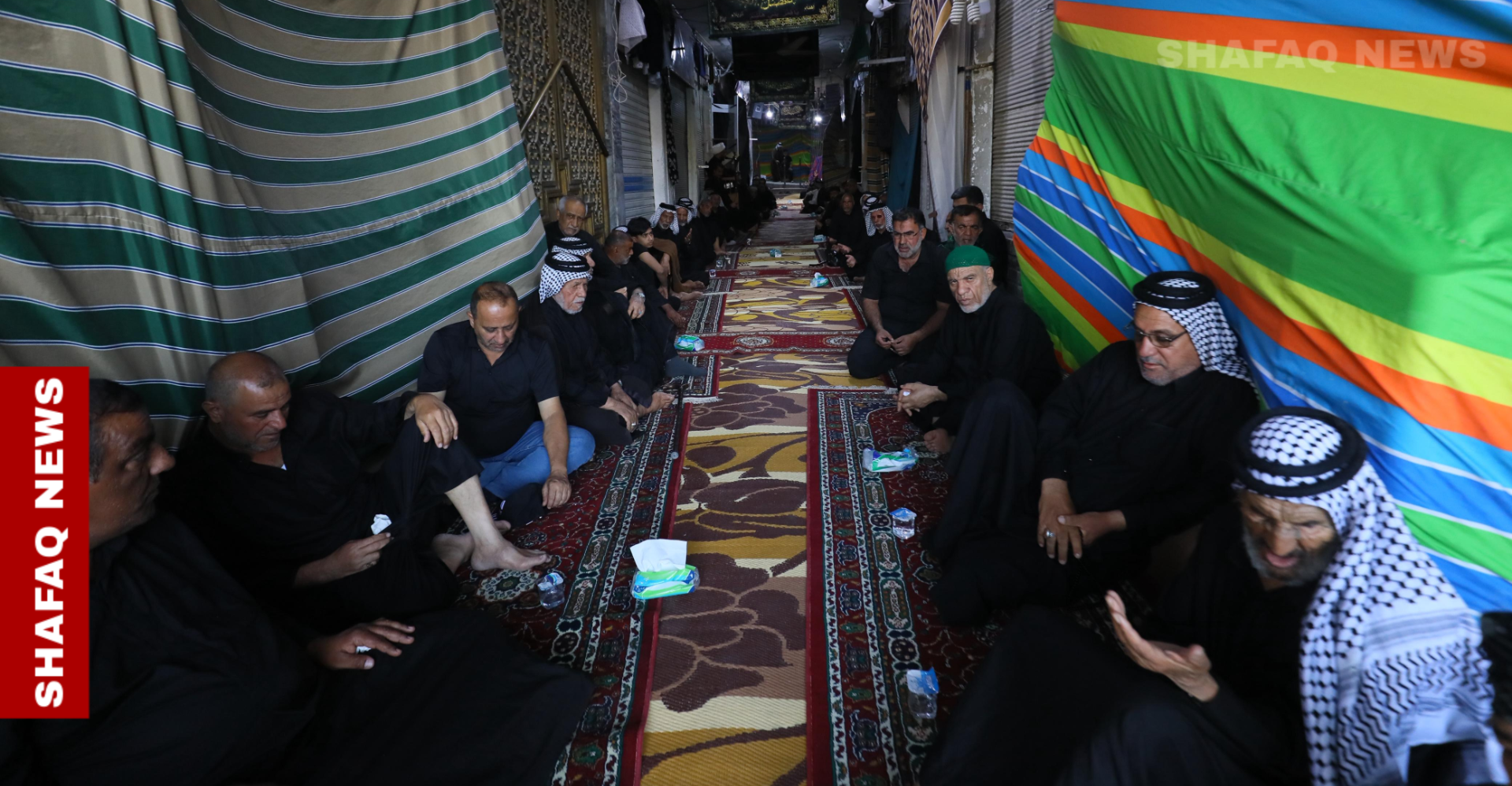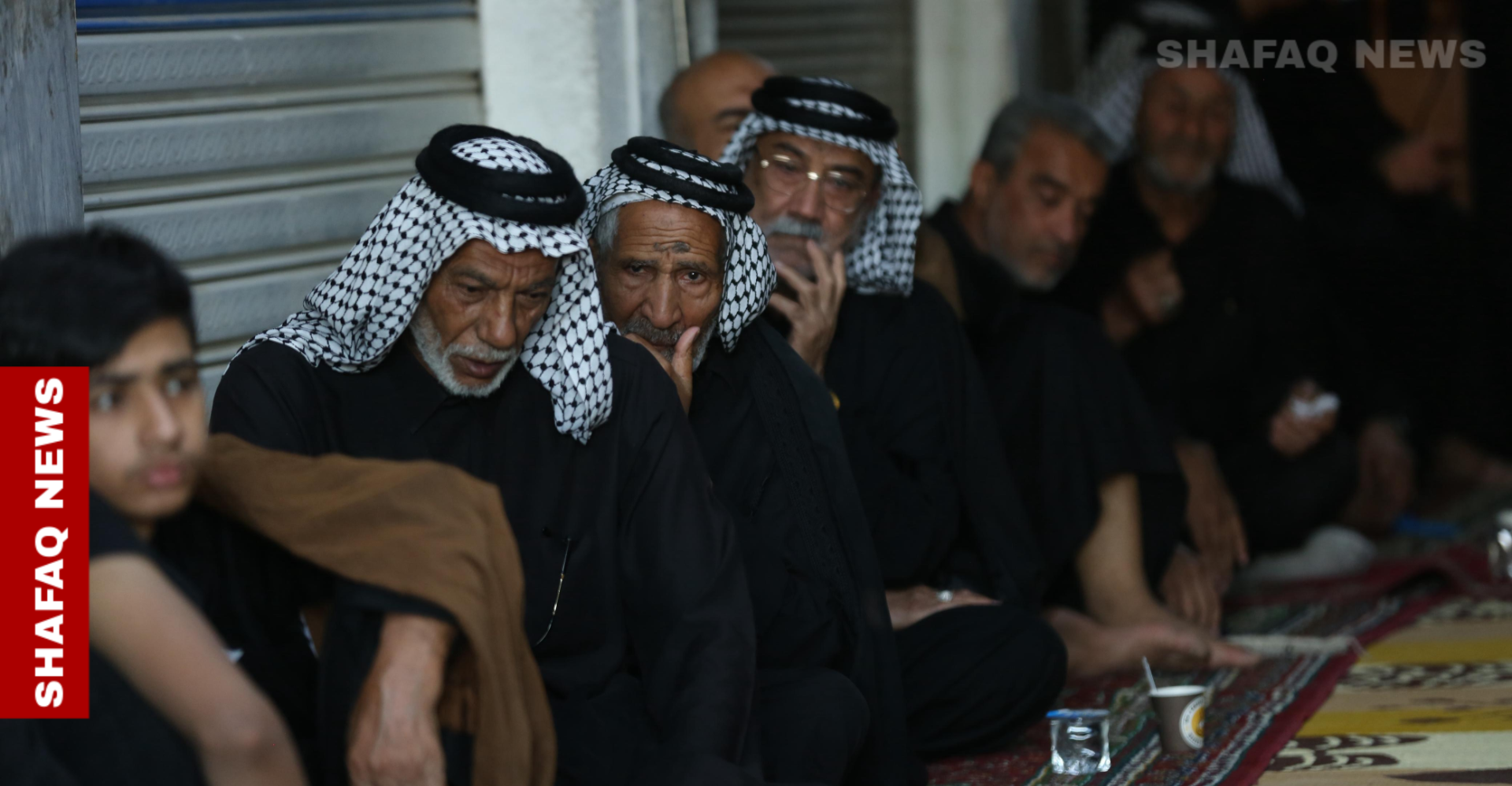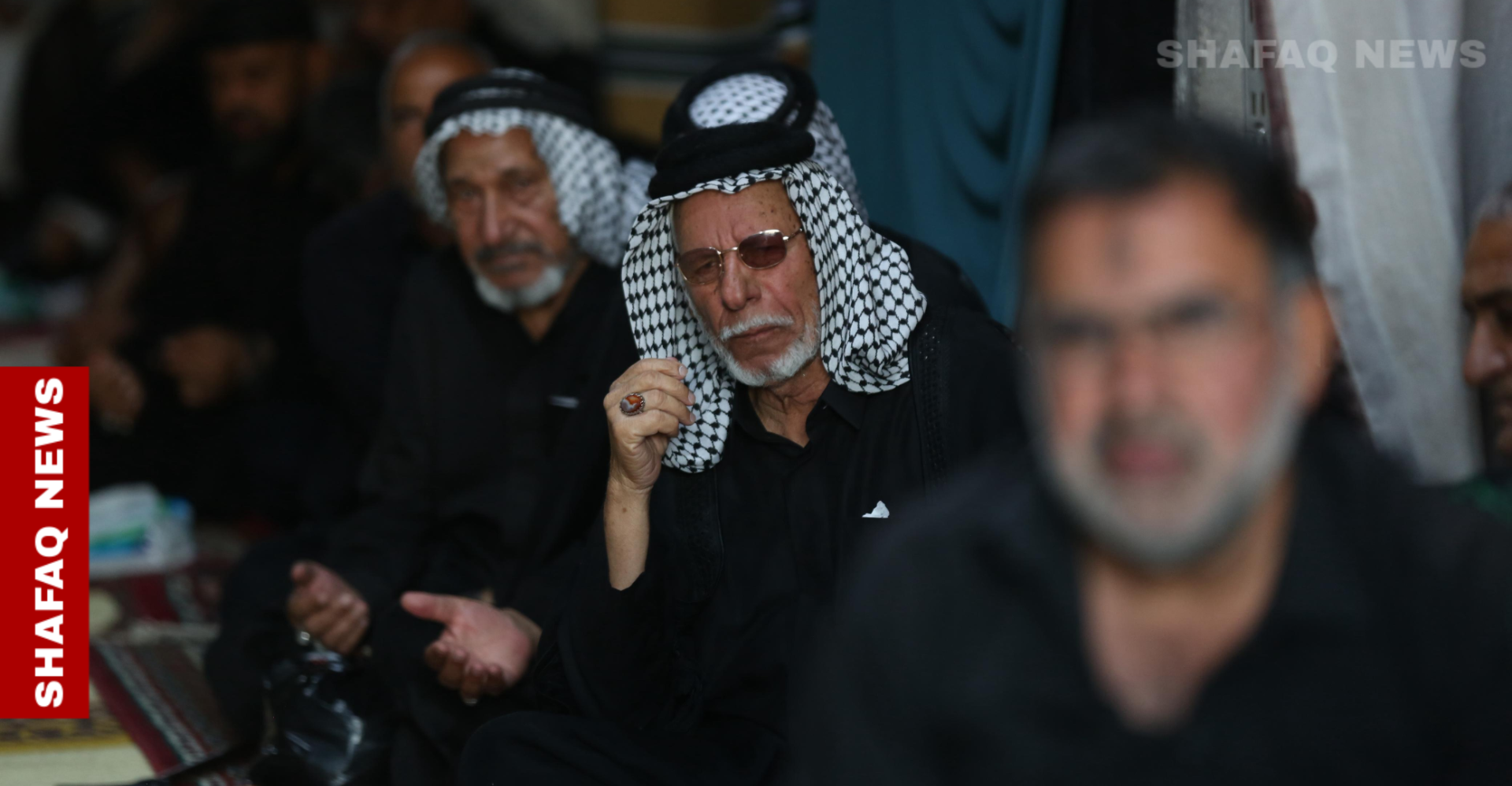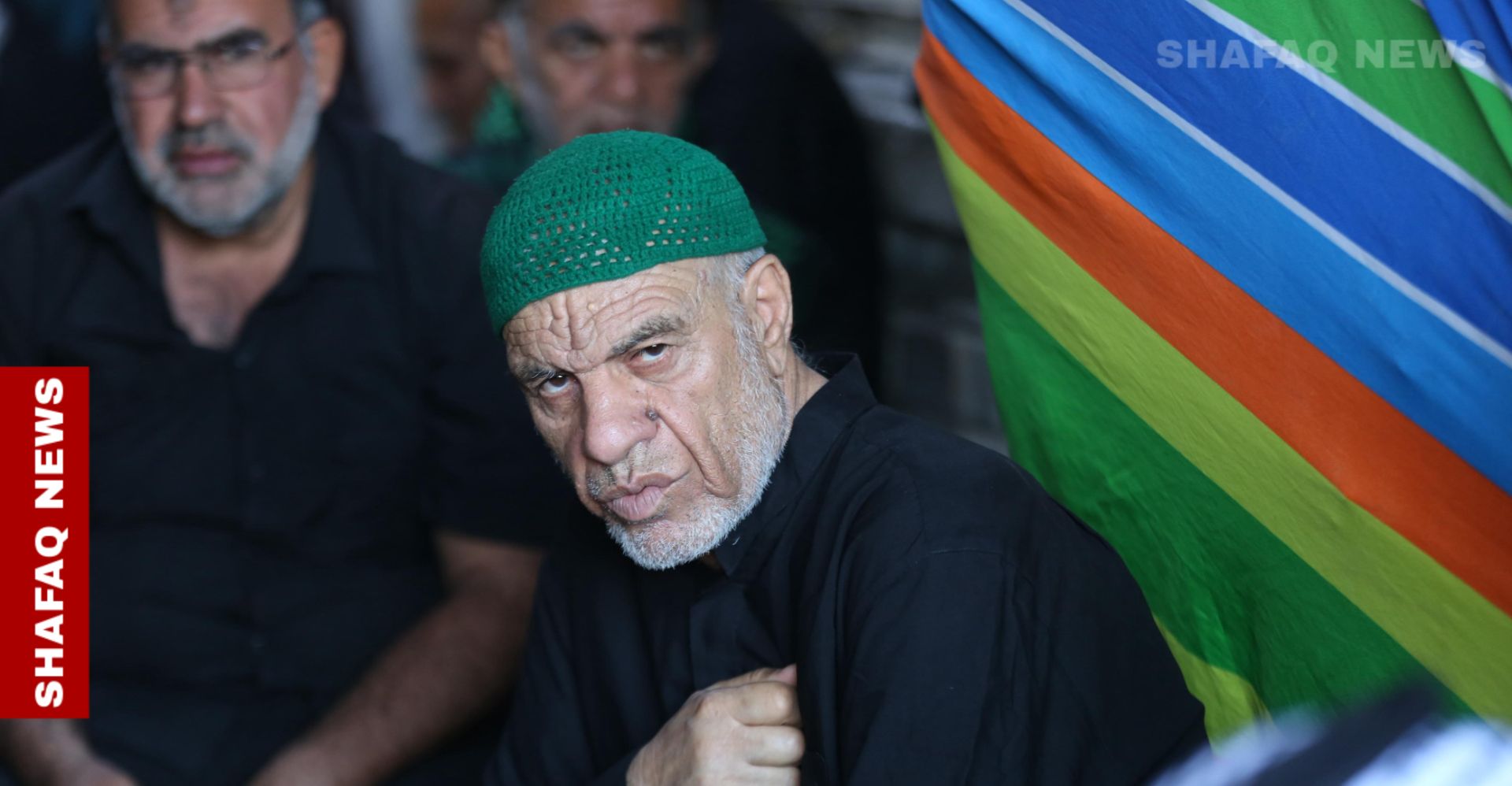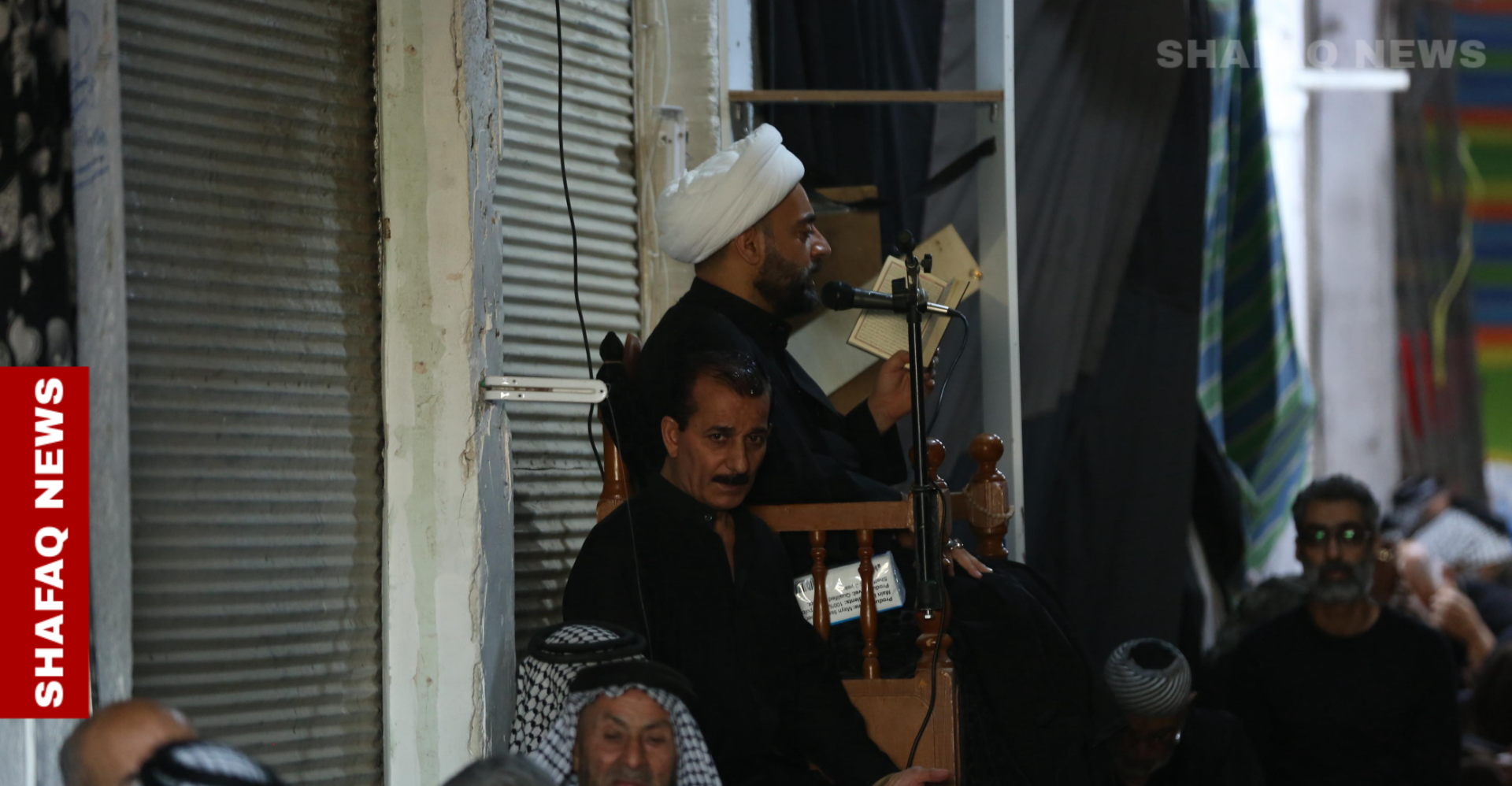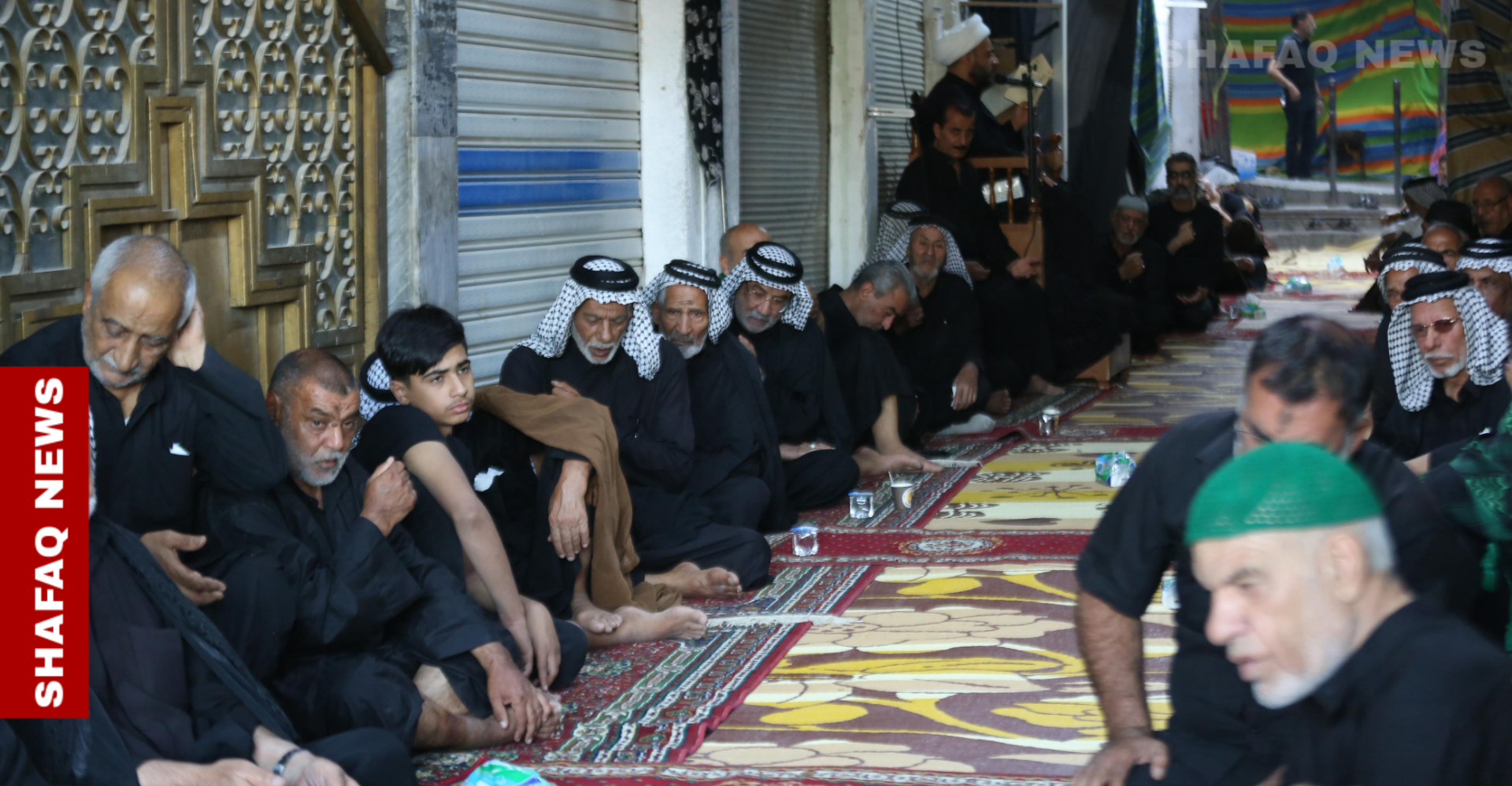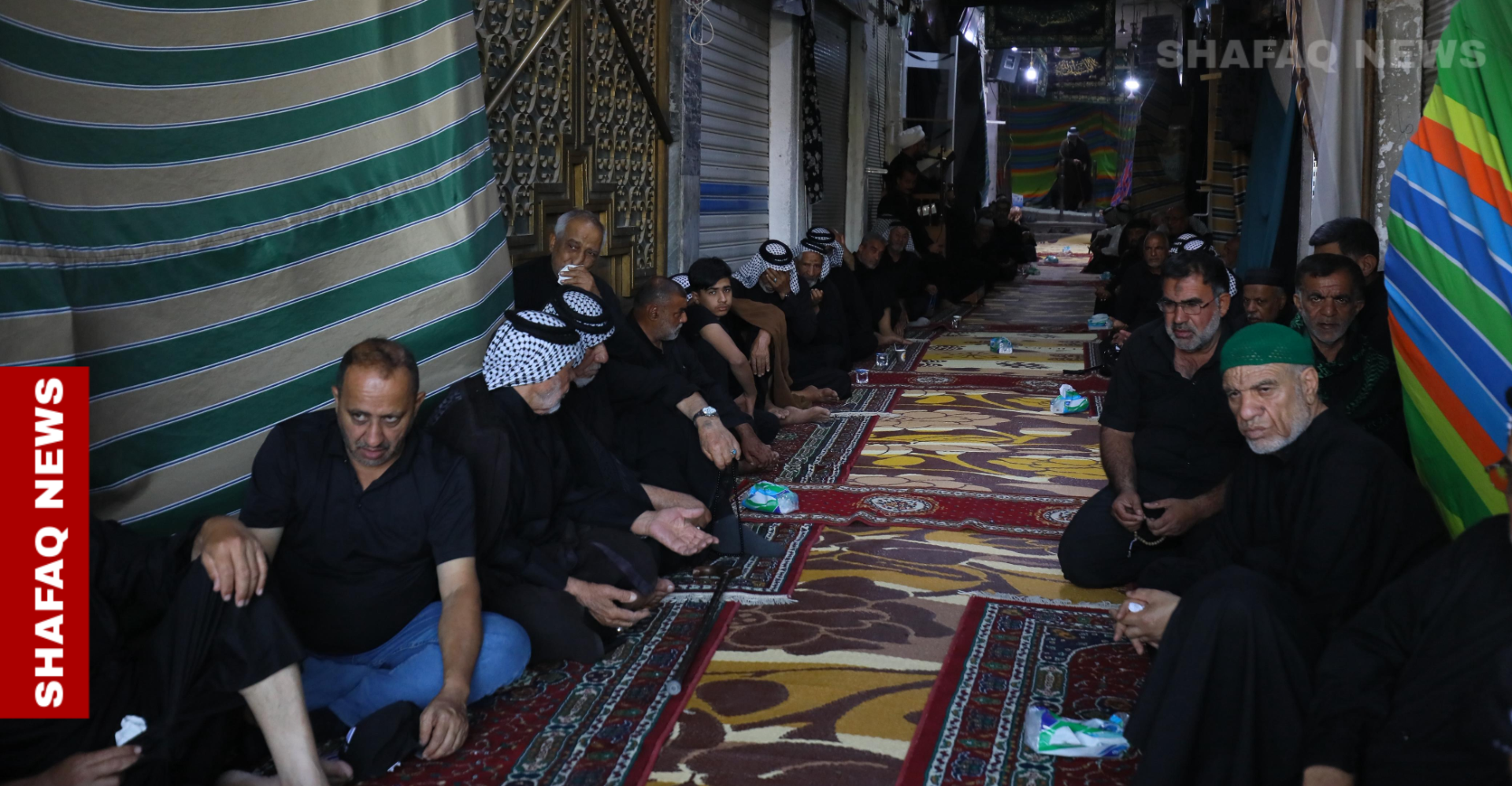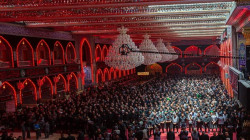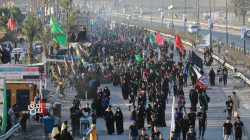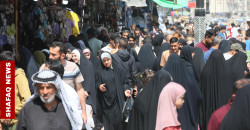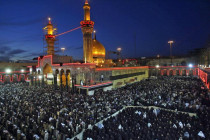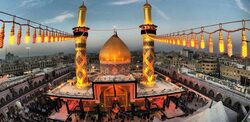Iraqi provinces showcase distinctive Ashura rituals
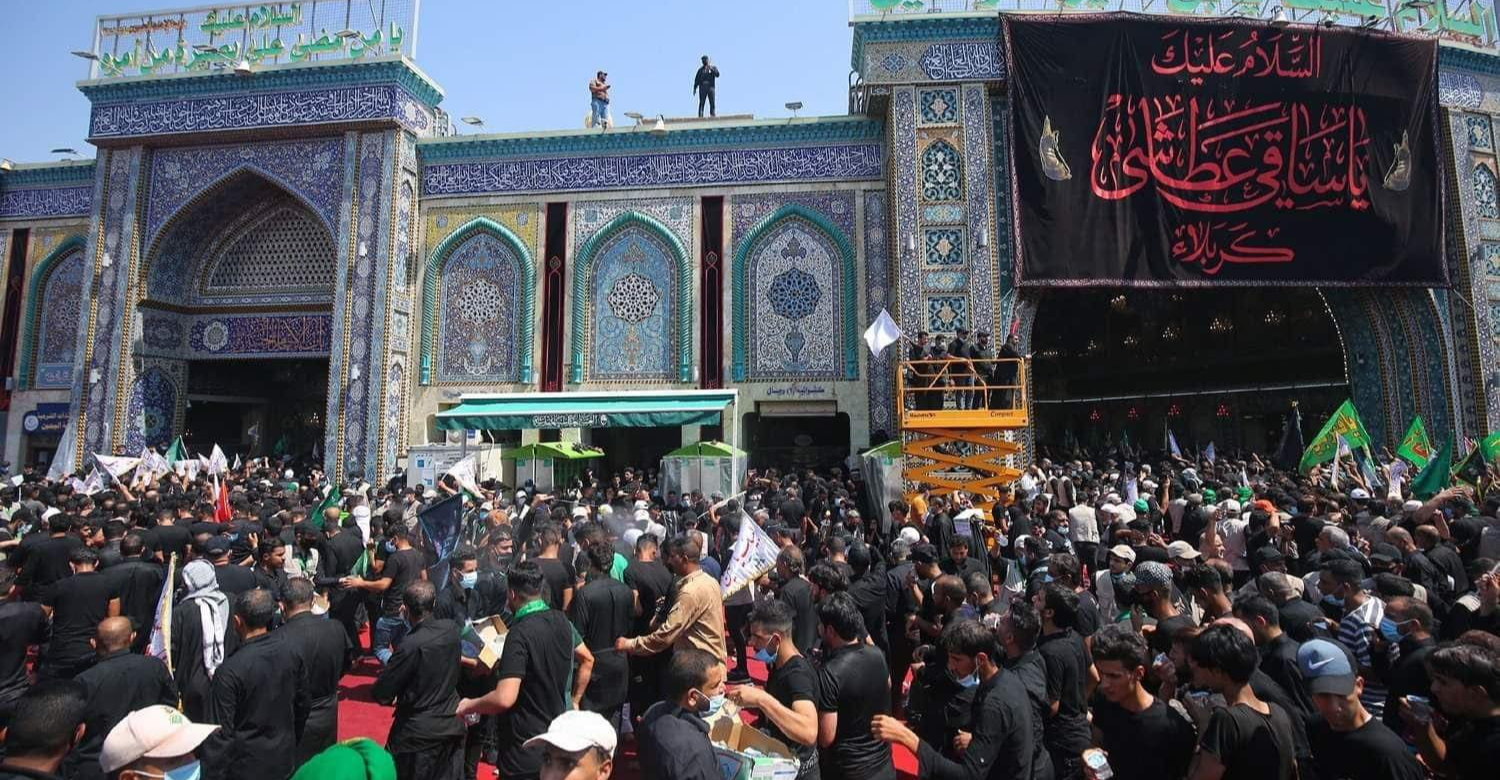
Shafaq News – Karbala/Babil
Communities across Iraq continue to uphold distinctive rituals blending faith and cultural tradition as millions of pilgrims converge on Karbala to observe the annual Ashura commemorations marking the martyrdom of Imam Hussein bin Ali, the grandson of the Prophet Muhammad.
In Karbala province, the largest ceremonies unfold at the shrines of Imam Hussein, who was killed along with his family and companions in the Battle of Karbala in 680 CE, and his half-brother Al-Abbas, where crowds pray, mourn, and distribute free food and water. Elsewhere across the province, smaller local observances persist. Each morning during the Islamic month of Muharram, residents set up mourning tents outside homes and businesses, reciting religious poetry and retelling the Karbala narrative before returning to work — maintaining a balance between spiritual devotion and daily life.
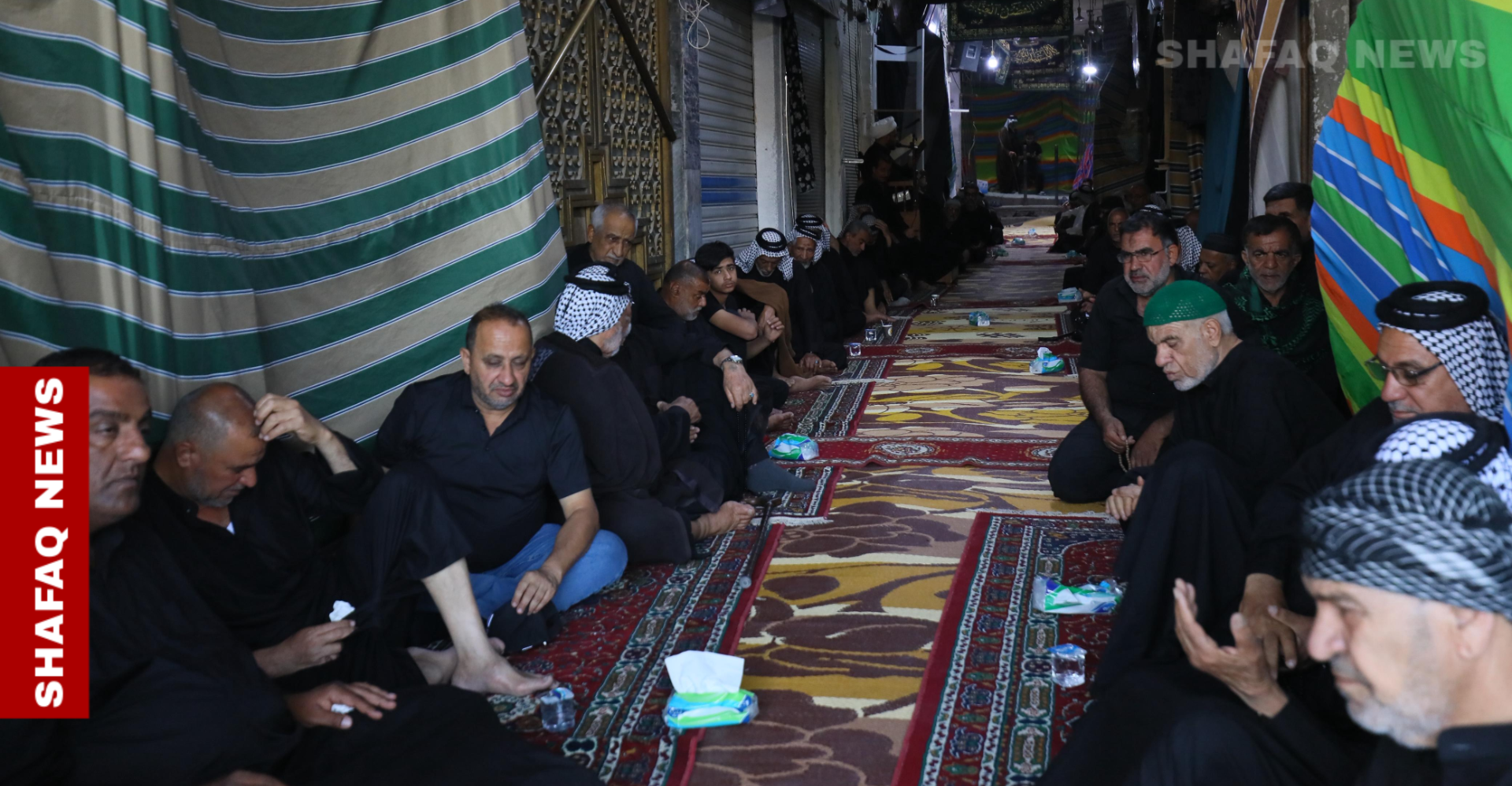
The mourning period extends until Arbaeen, forty days after Ashura, when millions again travel to Karbala to honor Imam Hussein’s legacy of sacrifice and resistance against oppression — a cornerstone of Shiite identity worldwide.
In Babil’s Al-Qasim district, residents revived the centuries-old Torch-Raising Ceremony during the first ten days of Muharram. Young men paraded with flaming torches alongside large scale public processions, known as Husseini marches, featuring rhythmic chest-beating (Latm), religious chants, and elegies recalling the Karbala tragedy.
They also performed Sword Drills — a martial display of choreographed blade movements symbolizing courage and unity, paying tribute to those who fought alongside Imam Hussein.
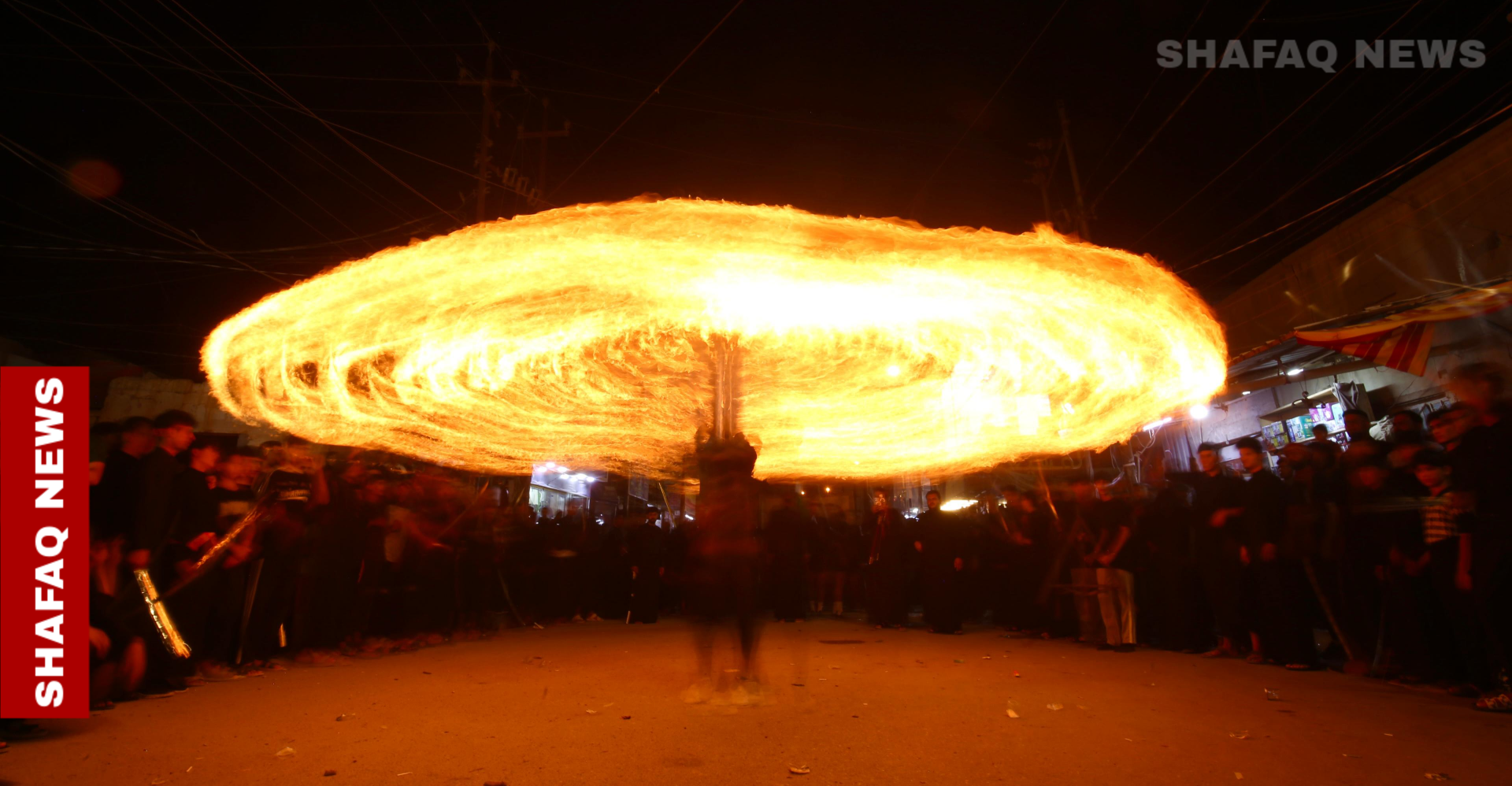
So far this week, hundreds of thousands of pilgrims have arrived in Karbala through border crossings and via Najaf and Baghdad international airports. The total number of visitors is expected to exceed 20 million, consistent with previous years. The event ranks among the largest annual religious gatherings globally.





